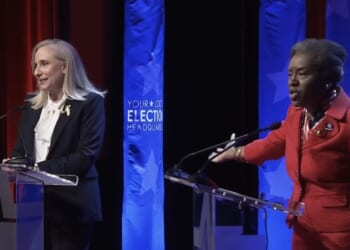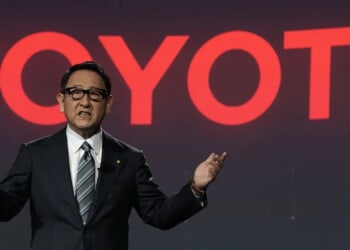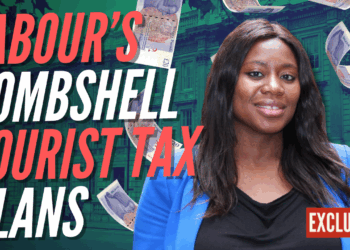David Gauke is a former Justice Secretary and was an independent candidate in South-West Hertfordshire at the 2019 general election.
Most party leaders must feel a sense of trepidation about their party conferences.
Four of five days of intense politicking, announcements, speeches, colleagues being indiscreet, journalists ever-present and ever hungry for news. There is plenty that can go wrong.
And then there are the party members.
They are the doorknockers and the deliverers without which political parties cannot fight the ground war. They will have few illusions about the popularity of their political party. They will also be the true believers, convinced that if only the party was truer to its values, it would be doing better.
Exposure to the party members will not, of course, come as a shock to a party leader. Few reach the top of their party without have an astute understanding of their party’s membership and the ability to charm it. But the party conference is the one time of the year when the general public is exposed to the party grassroots. This is not invariably a comfortable experience for the party leader, but it is an educative moment for the electorate.
With the Conservative conference under way, we can already assess the three proceeding conferences. Each of them, in their own way, was successful. Reform’s conference was upbeat and well-organised. The Liberal Democrats also looked pleased with themselves and attracted attention. Keir Starmer ended his conference week in a stronger position than he began it with Andy Burnham embarrassing himself and the leader’s speech being well-received.
None of this is unusual.
Party leaders may begin a party conference with trepidation, but it normally works out alright. The party membership is generally willing its leader to succeed, disloyalty is frowned upon, and the leader’s speech is an extended opportunity to make a case to the party and to the country.
Having said that the other parties will be pleased with their conferences, look below the surface and, to a greater or lesser extent, all of them revealed tensions within these parties. What is more, all of these tensions create an opportunity for the Tories.
The first conference was Reform. This was not the conference typical of a party with five MPs – it was big and slick, even if it had its moments of naffness. But what was it doing offering a platform to an antivaxxer? Or to Lucy Connolly, who rose to prominence because of a disgraceful (not to mention, criminal) post on X? The answer, presumably, was that the leadership perceived these people – a crank and a racist – as appealing to Reform’s members.
There are times when Nigel Farage looks as if he is trying to reposition his party, smoothing the rough edges.
He has kept his distance from Tommy Robinson, he has taken less extreme positions than Rupert Lowe and Ben Habib, but he still allowed his conference to feature figures too disreputable to be allowed to appear at the conference of a mainstream party. Farage is astute enough to know that this is strategically unwise but must have seen this as a sop to his supporters. It is an indication of Reform’s current limitations in broadening its base beyond the populist right to capture the centre right.
The Liberal Democrats also have an opportunity to occupy parts of the centre right, but from the other end of the spectrum. Ed Davey talks of being “obsessed” by “homeless Tories” and his party holds many of the constituencies where moderate Conservatives are most prevalent. But, despite these electoral successes, there is little sign that his party is changing to reflect its new, Home Counties base. The Trump/Farage bashing goes down well, and Davey’s decency appeals, but the party is in its comfort zone in offering little by way of a national programme or a willingness to face up to difficult choices.
What is more, from the perspective of the centre right, Davey looks to be as good as it gets within the current Liberal Democrats. Reports from their party conference suggested that the pressure from the grassroots is to be bolder and more radical and to attack Labour from the left. There is, to be fair, an electoral logic to this. There are relatively few additional Tory seats to be won, but the Government is unpopular, particularly with those who consider themselves to be progressive. The membership of the Liberal Democrats leans to the left, and the party leadership could follow.
As for Labour, Starmer had a good week, but his speech had something for everyone. Is he a figure of the liberal left, condemning Reform as having racist policies, or a social conservative tightening immigration policy? Is he appealing to the liberal middle classes or the less liberal working classes? Hs party membership – judging from which parts of his speech landed best in the conference hall – fall into the former category, but his political strategy often appears more focused on the latter.
Then we come to economics. This is not home territory for Starmer and was only lightly covered by him in his speech.
To the extent that he had an argument on this, it was that globalisation went too far. His is an agenda for state intervention, for national champions (boasting of the intervention to protect steelmaking in Scunthorpe) and suspicion of the market. Whereas once upon a time, Tony Blair challenged Labour’s prejudices about business, markets and globalisation, Starmer seems to share them. He dismissed the idea of a wealth tax and, after his speech was safely delivered, raised the prospects of welfare reform, but there was very little that Labour offered to appeal to the economically centre right. If there were to be a leadership race, we can just look at what Burnham is offering to see which way the wind is blowing, and it is towards the left.
Taken together, what we can see is that we have three political parties constrained by their memberships. Reform is a party of the populist right with a leader not fully in control of its fringe elements who repel moderate voters. The Liberal Democrats’ heart beats on the left, which prevents its leader from trying to occupy the centre. Labour is trying to occupy the centre ground on immigration, but on the economy there is little resistance to the pressure to move leftwards.
All of this points to the opportunity for the Conservatives.
The territory of the traditional centre right is unoccupied and unthreatened by the other parties.
It is an assertion to which some will scoff, arguing that there is now little demand for the politics of the traditional centre right, that society is now more polarised and focused upon cultural issues where the moderation of the centre right is considered unfashionable. But in an era when both the left and the populist right are tempted by fiscal recklessness, and when a Labour Government believes that the answer to most problems is a bigger state paid for by higher taxes on wealth creators, a party of the centre right should be able to provide a credible way forward.
The Conservatives are holding their conference with dismal poll ratings, morale low, and the party’s very existence in question.
But if it has been paying attention to its opponents’ conferences, it should be aware that there is more than enough political space in which it can flourish.
The question remains, however, whether this is the space that it wants to occupy.
















